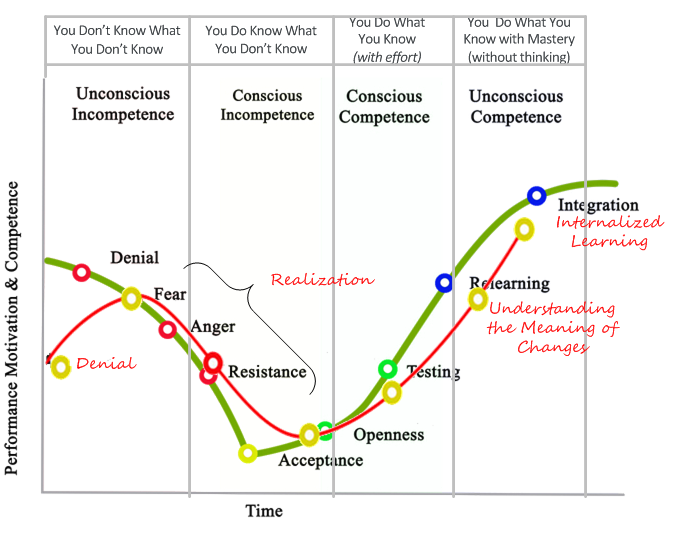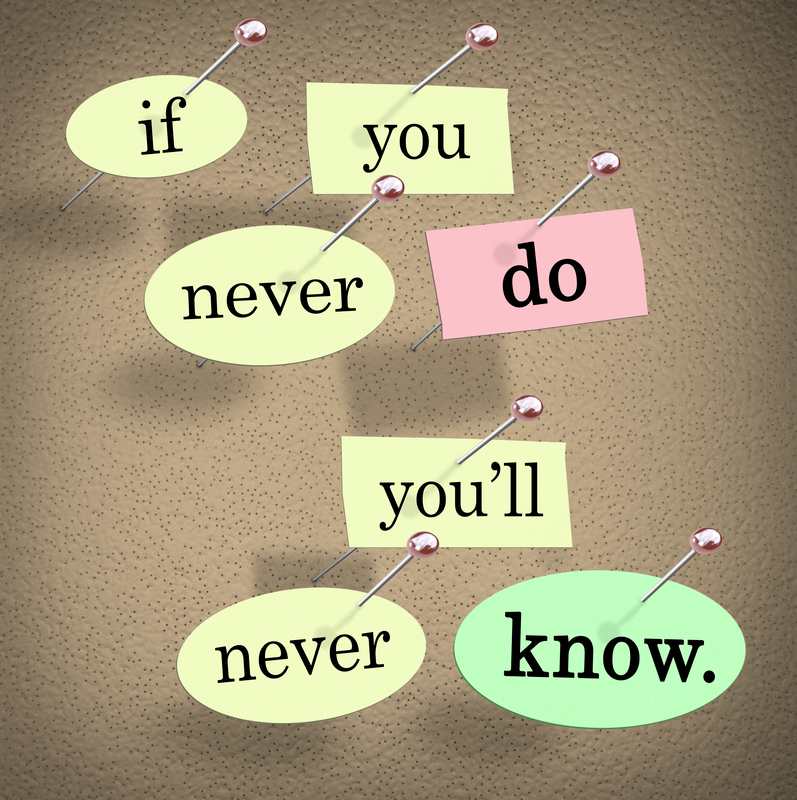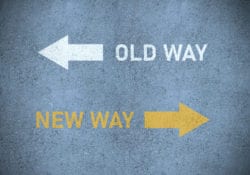Strong Point’s Leadership Rule #19: Live It to Learn It
Strong Point’s Leadership Rule #19: Live It to Learn It
Much of the work that Strong Point endeavors to visualize, plan, execute and complete revolves around business transformation and helping individuals, teams and organizations make material and significant changes in behaviors and outcomes. We work to help others work differently. The goal is to produce better business outcomes, be it greater productivity, increased margins and profitability or reductions in waste and downtime. We support our clients in their efforts to “see and do things differently” or from another perspective. Often this change in seeing or doing is facilitated through the eyes and ears and hands of others. We are those other ears, eyes, and hands.
Albert Einstein is tagged as the author of the saying: “If you want different results, you have to actually DO things differently. “ His sentiments are often expressed in the opposite context: “The definition of insanity is doing things the same way, over and over, and expecting different results.”
Helping others to change behavior requires knowledge of how we learn. If you follow the linear progression from thought to action, then you must also deeply understand that behavior is the cumulative effect of consistent effort (i.e., doing the same thing over and over). I reference both the Prayer of St. Francis and one of Stephen Covey’s 7 Habits, Seek First to Understand, here. Remember, too, that there are four stages of learning. The four stages of learning were developed by Noel Burch, an employee with Gordon Training International. Burch developed the Conscious Competence Ladder in the 1970s. It’s also referenced as the four stages of competence. Review the four stages here:
| Stage of Learning/Competence | Shorthand Vernacular | Definition |
|---|---|---|
| 1. Unconscious Incompetence | You Don’t Know What You Don’t Know | In unconscious incompetence, the learner isn’t aware that a skill or knowledge gap exists. |
| 2. Conscious Incompetence | You Do Know What You Don’t Know | In conscious incompetence, the learner is aware of a skill or knowledge gap and understands the importance of acquiring the new skill. It’s at this stage that learning can begin. |
| 3.Conscious Competence | You Do What You Know (with effort) | In conscious competence, the learner knows how to use the skill or perform the task, but doing so requires practice, conscious thought and hard work. |
| 4. Unconscious Competence | You Do What You Know with Mastery (without thinking) | In unconscious competence, the individual has enough experience with the skill that he or she can perform it so easily they do it unconsciously. |
I often tell customer leaders that Strong Point works to help close the gap between “what people think they know and what they actually know.” In my mind, I am saying we help people transition from the third stage of learning to the fourth. We help them advance “working knowledge” of business and leadership development into mastery of a set of skills in those two domains.
The weird thing about mastery is that it’s achieved by performing a particular action “over and over.” The phrase “learn by doing” comes to mind. This learning by doing is also called Experiential Learning and is applied and often taught through Immersive Teaching Styles.
Moshin Memon, in his May 10th, 2017 article in the Training Industry eMagazine called Experiential Learning versus Immersive Learning, says that experiential learning has proven to be a great tool in developing skills. He also explains that when we’re learning to put new skills into practice, we often bump up against our own will. He uses the phrase “skill or will.“ I believe, like he does, that the “will” or behavioral part of the learning challenge is a bit trickier to recognize and change than it is to teach a functional skill. The problem statement may sound something like this:
“They know they need to work together, but they don’t.” Logically and conceptually, the employees understand that working together is the right thing to do, but there may be many things holding them back from actually bringing that understanding into reality”
If you review a conventional Learning Curve, you’ll see that it often mimics or mirrors another common construct, the Change Curve. In the illustration below, I overlaid a typical Change Curve (highlighted in Red) onto a familiar visualized Learning Curve (highlighted in green). Indeed, some of the labels on both curves are the same. Learning by default, is changing behavior.

I also find it interesting that the first four stages of learning and change are also the first four of five stages of grief in the Kübler-Ross model, outlined by famed Swiss-American psychiatrist, Elisabeth Kübler-Ross in her 1969 book On Death and Dying (1969). Learning, unlearning, changing, growing and transforming are all highly emotional activities heavily laden with loss. Facilitating and enabling meaningful and lasting behavioral change is no small feat. Working with people trying to make significant and lasting changes, often places you at the center of what matters most to them: their work, their livelihood, their professional identity, their confidence as a skilled practitioner, their perceived value in an organization, and so on. Changing any of those important aspects of a person’s life tends to draw out a person’s deepest fears, memories of failure, or even most cherished and private dreams of success. Emotional intelligence, compassionate caring, empathetic listening, and action are all requirements of behavioral change facilitation. Facilitating change is a hallowed, whole person (mind, body, spirit) activity, in my experience. It’s hard work. It’s meaningful work.
I think we all know that mastery of a specific function or set of tasks requires consistent effort and action and that these consistent actions create neural pathways and networks in our brain. The presence of neural networks contributes to excellence and produces confidence in expected outcomes and results. Experiential practice and immersion into new ways of working, more often than not, yields desired results. You have to live it to learn it.
Strong Point’s Leadership Rule #19: Live It to Learn It
Research into aligned content to my thoughts in this blog brought me to a 2014 study that conducted a meta-analysis of 40 years of research related to experiential learning. I was looking for evidence that supports the positive impact of experiential learning used as a method to move more effectively from the third stage of learning, conscious competence, to internalized mastery or the highest level of learning. The Study called Experiential Learning – What Do We Know? was conducted by a group of university professors and research colleagues from Tarleton State University in Texas and West Florida University.
| This study’s analysis included a review of forty years’ worth of studies analyzing the impact of experiential learning. The conclusion from the Tarleton/West Florida Study shows that the majority of the other studies of experiential learning led to the same conclusion: that experiential learning activities have a positive and significant effect on learning that is more meaningful and substantive than more passive forms of instruction. |  |
The study’s summary states that Experiential Learning,
“creates a significant and positive improvement in learning outcomes”
Additionally, the study concludes that the demonstrated level of learning is very similar to the student’s perception of learning. I take this to mean that the student thinks that what he or she learned is very close to what the instructor intended to teach.
When I think of experiential learning, I think of Olympic skiers, violin or piano virtuosos and master craftsmen. You know that hours and hours and months and years of dedicated practice (i.e., experiential learning) went into the results that you are seeing. Getting that same level of mastery as a business group or team is much harder to achieve. The limited amount of time together, the varied experiences and skills, the even more variable life experiences, attitudes and values all create higher barriers to learning and predicting operational results.
The argument I am making here is that leaders would benefit from providing more on-the-job, action-oriented opportunities for managers, professionals and teams in their sphere of influence, to learn and master new skills. The learning opportunities provided to employees and teams can include but should not be limited to:
- External Classes and Experiential Learning Events
- Participation in an important Project or Initiative
- Shadowing Other Leaders and Professionals in another business functions for the sake of contributing ideas and providing feedback from other “ears, eyes and hands”
Participation in Innovation Activities such as:
- Business Case Development
- Proof of Concept Analysis and Review
- Process Development and Testing
So often in my experience, leaders and professionals working on getting things done, struggle with taking the knowledge that’s in their minds gained through training and education and integrating and applying that knowledge into action and execution that produces desired and predictable results. Stringent or punitive operating environments and cultures make it hard for leaders and managers to make missteps or mistakes while they’re trying out new skills or ways of working. The genuine possibility of being humiliated, ostracized, demoted or dismissed keeps professionals fearful of failure. This fear keeps them from trying new things, learning new things. Learning often stops at Stage 3, in the professional environments and projects I have witnessed and worked through. Innovation, in my humble opinion, usually occurs during the transition between conscious competence and mastery, when people are pushing past their comfort zones and working to achieve excellence and break-through results. Creating an environment of continuous learning, and accelerated learning enabled through experience, is vital to innovation, execution, sustainability and a healthy and vibrant corporate culture.
An excellent white paper on Best Practices in Experiential Learning, written in 2012 by Michelle Schwartz, Research Associate for the Vice Provost of Ryerson University highlights some of the Hows and Whats for Experiential Learning: How to Make it Effective; and What to Focus on in the Operating Environment.
| How to Make Experiential Training Effective | What to Focus on in the Operating Environment |
|---|---|
|
|
Researchers and professors in the Tarleton State/ West Florida study
remind us that:
“Professional learners need conditions where they can explore new knowledge and ways of working in a safe environment, with time to reflect on their learning and guidance and integrate both.”
Learning takes time and practice. Strong Point’s Leadership Rule #19: Live It to Learn It




